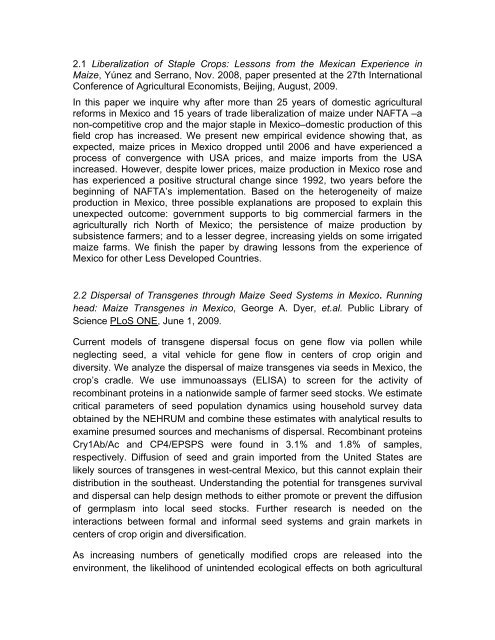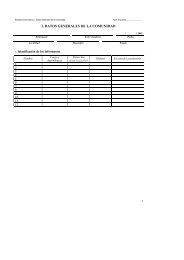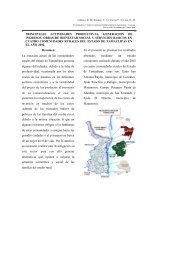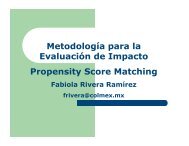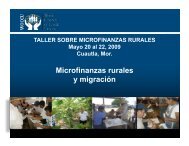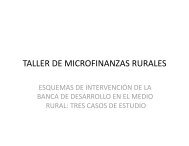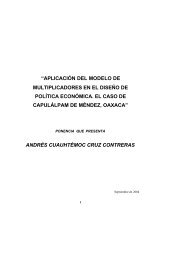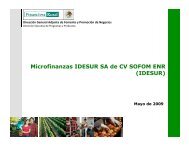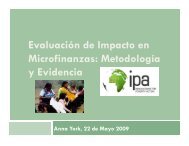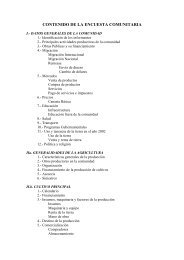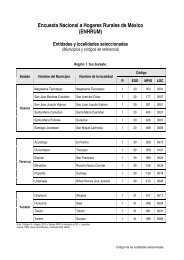INFORME FINAL DEL PRECESAM - El Colegio de México
INFORME FINAL DEL PRECESAM - El Colegio de México
INFORME FINAL DEL PRECESAM - El Colegio de México
Create successful ePaper yourself
Turn your PDF publications into a flip-book with our unique Google optimized e-Paper software.
2.1 Liberalization of Staple Crops: Lessons from the Mexican Experience in<br />
Maize, Yúnez and Serrano, Nov. 2008, paper presented at the 27th International<br />
Conference of Agricultural Economists, Beijing, August, 2009.<br />
In this paper we inquire why after more than 25 years of domestic agricultural<br />
reforms in Mexico and 15 years of tra<strong>de</strong> liberalization of maize un<strong>de</strong>r NAFTA –a<br />
non-competitive crop and the major staple in Mexico–domestic production of this<br />
field crop has increased. We present new empirical evi<strong>de</strong>nce showing that, as<br />
expected, maize prices in Mexico dropped until 2006 and have experienced a<br />
process of convergence with USA prices, and maize imports from the USA<br />
increased. However, <strong>de</strong>spite lower prices, maize production in Mexico rose and<br />
has experienced a positive structural change since 1992, two years before the<br />
beginning of NAFTA’s implementation. Based on the heterogeneity of maize<br />
production in Mexico, three possible explanations are proposed to explain this<br />
unexpected outcome: government supports to big commercial farmers in the<br />
agriculturally rich North of Mexico; the persistence of maize production by<br />
subsistence farmers; and to a lesser <strong>de</strong>gree, increasing yields on some irrigated<br />
maize farms. We finish the paper by drawing lessons from the experience of<br />
Mexico for other Less Developed Countries.<br />
2.2 Dispersal of Transgenes through Maize Seed Systems in Mexico. Running<br />
head: Maize Transgenes in Mexico, George A. Dyer, et.al. Public Library of<br />
Science PLoS ONE, June 1, 2009.<br />
Current mo<strong>de</strong>ls of transgene dispersal focus on gene flow via pollen while<br />
neglecting seed, a vital vehicle for gene flow in centers of crop origin and<br />
diversity. We analyze the dispersal of maize transgenes via seeds in Mexico, the<br />
crop’s cradle. We use immunoassays (ELISA) to screen for the activity of<br />
recombinant proteins in a nationwi<strong>de</strong> sample of farmer seed stocks. We estimate<br />
critical parameters of seed population dynamics using household survey data<br />
obtained by the NEHRUM and combine these estimates with analytical results to<br />
examine presumed sources and mechanisms of dispersal. Recombinant proteins<br />
Cry1Ab/Ac and CP4/EPSPS were found in 3.1% and 1.8% of samples,<br />
respectively. Diffusion of seed and grain imported from the United States are<br />
likely sources of transgenes in west-central Mexico, but this cannot explain their<br />
distribution in the southeast. Un<strong>de</strong>rstanding the potential for transgenes survival<br />
and dispersal can help <strong>de</strong>sign methods to either promote or prevent the diffusion<br />
of germplasm into local seed stocks. Further research is nee<strong>de</strong>d on the<br />
interactions between formal and informal seed systems and grain markets in<br />
centers of crop origin and diversification.<br />
As increasing numbers of genetically modified crops are released into the<br />
environment, the likelihood of uninten<strong>de</strong>d ecological effects on both agricultural


